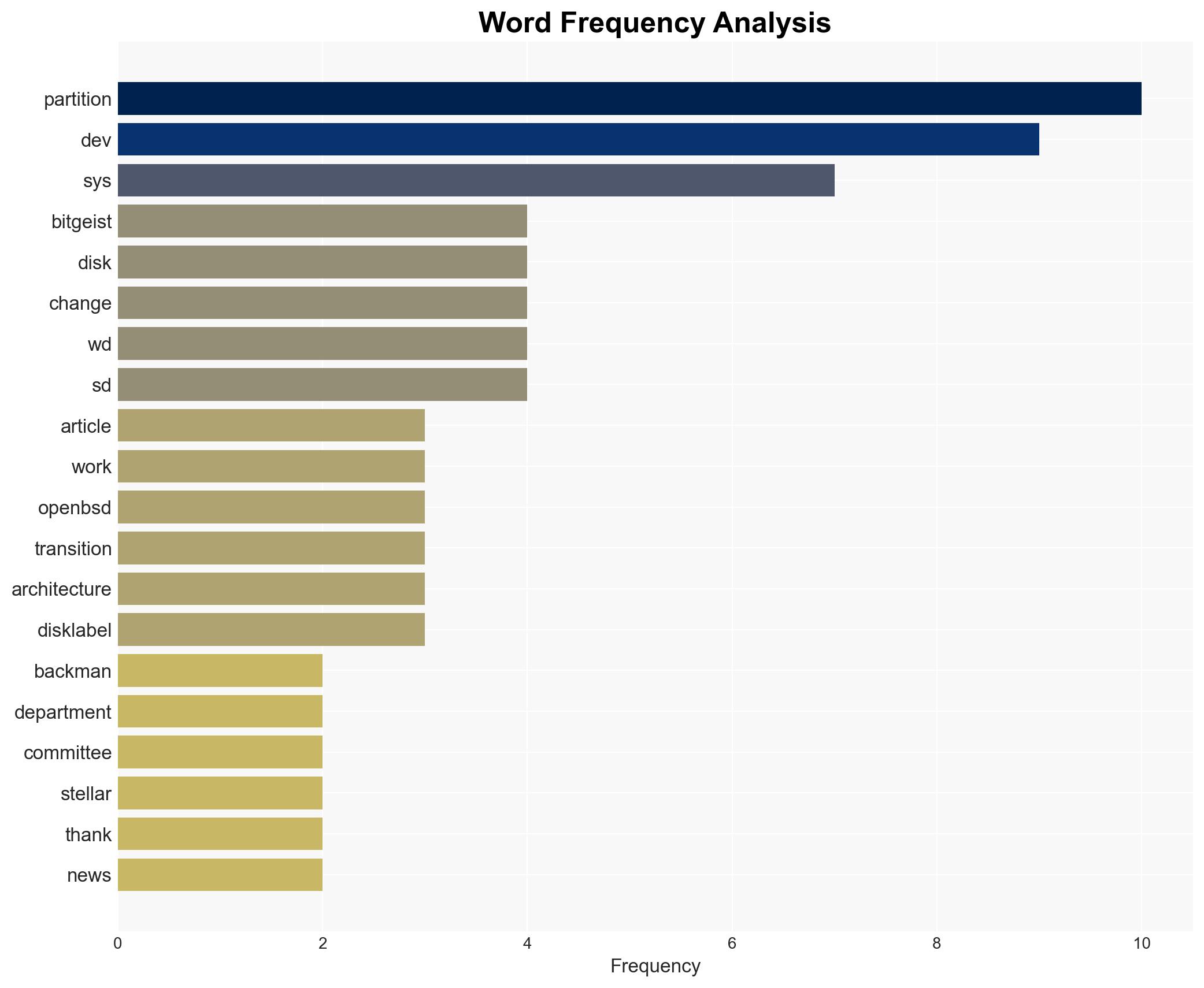Transition to support for 52 partitions – Undeadly.org
Published on: 2025-11-14
AI-powered OSINT brief from verified open sources. Automated NLP signal extraction with human verification. See our Methodology and Why WorldWideWatchers.
Intelligence Report: Transition to support for 52 partitions – Undeadly.org
1. BLUF (Bottom Line Up Front)
The transition to support 52 partitions in OpenBSD’s architecture is a strategic move to enhance system flexibility and scalability. The most supported hypothesis is that this transition aims to future-proof OpenBSD systems against evolving hardware demands. Confidence Level: Moderate. Recommended action is to monitor the transition’s impact on system stability and user adaptation, ensuring comprehensive support and documentation are provided.
2. Competing Hypotheses
Hypothesis 1: The transition to support 52 partitions is primarily driven by the need to accommodate new hardware architectures and enhance system scalability.
Hypothesis 2: The transition is a response to specific user demands or security vulnerabilities that require more partition flexibility.
Hypothesis 1 is more likely due to the mention of hardware architecture and compatibility considerations in the source text. The emphasis on backward compatibility and system upgrade processes suggests a proactive approach to future-proofing rather than a reactionary measure.
3. Key Assumptions and Red Flags
Assumptions: It is assumed that the transition will be seamless and that users will adapt without significant issues. It is also assumed that the current hardware and software ecosystem can support this change without major disruptions.
Red Flags: The potential for system instability during the transition period is a concern. The mention of manual kernel replacement and system root failures indicates possible challenges in user adaptation and system reliability.
4. Implications and Strategic Risks
The transition could lead to temporary system instability, impacting users reliant on OpenBSD for critical operations. If not managed properly, this could result in reputational damage and loss of user trust. Additionally, there is a risk of increased cyber vulnerabilities during the transition period, which could be exploited by malicious actors.
5. Recommendations and Outlook
- Ensure comprehensive testing and validation of the new partition support before full deployment.
- Provide detailed documentation and support to assist users in adapting to the changes.
- Monitor system performance and user feedback closely to identify and address any issues promptly.
- Best-case scenario: The transition is smooth, leading to enhanced system capabilities and user satisfaction.
- Worst-case scenario: Significant system failures and user dissatisfaction due to unforeseen technical challenges.
- Most-likely scenario: Initial minor disruptions followed by successful adaptation and improved system performance.
6. Key Individuals and Entities
Theo de Raadt – Initiator of the transition.
OpenBSD Development Team – Responsible for implementing and managing the transition.
7. Thematic Tags
Cybersecurity, System Architecture, OpenBSD, Software Development
Structured Analytic Techniques Applied
- Adversarial Threat Simulation: Model and simulate actions of cyber adversaries to anticipate vulnerabilities and improve resilience.
- Indicators Development: Detect and monitor behavioral or technical anomalies across systems for early threat detection.
- Bayesian Scenario Modeling: Quantify uncertainty and predict cyberattack pathways using probabilistic inference.
Explore more:
Cybersecurity Briefs ·
Daily Summary ·
Support us
·





